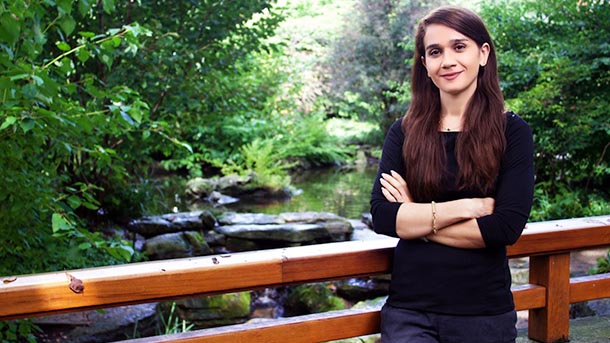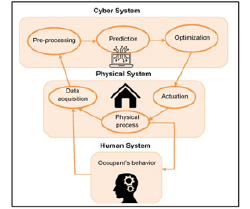
Somayeh Asadi, assistant professor of architectural engineering, studies infrastructure systems with a focus on smart buildings for integrated energy.
Building sustainable infrastructure
An architectural engineering assistant professor focuses on smart systems to improve the efficiency, resilience and performance of buildings
9/11/2018
UNIVERSITY PARK, Pa. — Buildings serve many essential purposes in people’s lives — they provide shelter; an environment to live, learn and work; and are the primary point of interaction between human life, physical systems and computational systems. However, the nature of modern buildings is changing dramatically. Buildings not only provide a space for people to live, learn and work, but also respond to the dynamically changing needs of occupants by improving comfort, lowering energy costs and increasing safety and security.
By studying infrastructure systems with a focus on smart buildings for integrated energy, Somayeh Asadi, assistant professor of architectural engineering, stresses the societal impact of buildings.
“Buildings and the entire built environment are basically social and cultural products. Buildings result from social needs and provide a variety of functions to their users. To properly design our buildings, we should examine the people and the society in which they [buildings] exist and understand their needs,” Asadi said.
According to Asadi, successful building design does not necessarily result in good building performance. She said it isn’t possible for buildings to function as projected and satisfy their occupant’s needs until they are occupied.
Asadi is working to highlight buildings’ potentials and shift the perception that they are simply containers for people on national and global levels. She looks at modern buildings entirely as cyber-physical-human energy systems that optimize energy use by their occupants, while providing comfortable living and working environments.
“To capture the full potential of smart and connected buildings, a need exists to develop and test holistic, integrative design methodologies for building sub-systems to autonomously assess and adapt to dynamic conditions spanning social, physical and cyber domains,” she said.
Asadi’s cyber-physical-human system work focuses on developing models that bring into account the fact that a building's environment is in a continuous flux due to shifting occupant needs and behavioral patterns. By leveraging technology and employing a system-level approach, buildings will provide comfort, safety and functionality while minimizing energy cost, supporting a robust electric grid and mitigating environmental impact.
She hopes to collaborate with experts in mechanical building systems, lighting and electrical building systems, computer science and engineering and behavioral sciences to collect measureable cyber-physical-human systems data.
To combat the increase in asthma, Asadi will work with colleagues to develop wearable, low-cost, low-power and cloud-based indoor air quality sensors to measure critical indoor air pollutants. Her team will gather data in order to define an algorithm of long-term air quality observation and to create a monitoring system that will provide building occupants with indoor air quality data.
Through partnerships with mechanical systems, computer science and engineering and behavioral science experts, she also hopes to use cognitive science to better define and understand how occupant behavior impacts a building’s energy performance. This research will pair together cognitive computer models with building design and systems models, gather and assess occupant behavior data and develop models to help better predict building occupant energy decisions.
Additionally, Asadi hopes to work with lighting, computer science and engineering and behavioral science experts to develop the necessary hardware and software for LED dimming capabilities relating to time of day and year or space use. Various light sensors will be developed in order to monitor build occupant alertness and to predict the spectral power distribution, or radiant power emitted by a light source at each wavelength, at various times of day and year, when dimmed or when a space’s function changes.
Recently, Asadi has also begun to develop practical, low-cost solutions to meet the increasing energy demands placed on power systems.
“By considering the electrical, heating and cooling energy demands in the network, my research will not only solve some of the basic challenges in the field of smart grids, but also it can be used in the large-scale system analysis with numerous agents, smart devices and distributed energy resources,” she said.




